-
New L.A. fault map threatens Hollywood development projects
The state of California recently released new geological maps which reveal the presence of an active earthquake fault along the path of major developments in Hollywood. The maps established a zone of 500 feet on both sides of the fault, and state law will require new developments within the zone to conduct underground seismic testing to determine whether the fault runs beneath planned development sites. Building on top of faults is prohibited. Three prominent Hollywood developments — the Millennium Hollywood skyscraper project, the Blvd6200 development, and an apartment project on Yucca Street — are within the 500-foot fault zone.
-
-
Massachusetts takes steps to withstand climate change impacts
Governor Deval Patrick of Massachusetts earlier this week unveiled a $50 million plan to help prepare Massachusetts for the challenges climate change poses to energy supplies, public health, transportation, and basic infrastructure in his state. A $40 million grant from the state’s Department of Energy Resources will help cities and towns develop protections around energy services, and $10 million will go toward shoring up critical coastal infrastructure and dam repair.
-
-
The causes of recent Caribbean earthquakes
A 6.4-magnitude earthquake shook Puerto Rico Monday 13 January. It caused some power outages and cracked floors, but no major damage or injuries were reported. The quake, which struck the northern coastal town of Hatillo, is one of the largest to hit the U.S. territory in recent years. This event comes four days after a 5.0-magnitude earthquake rattled Havana, Cuba. Researchers say that the earthquake in Puerto Rico occurred on the North American-Caribbean plate boundary, whereas the earthquake in Cuba happened well inside the North American plate. Although inter-plate earthquakes do occur, often on older faults that are reactivated, they are less common than those that form at plate boundaries.
-
-
Stimulating plant growth and increasing crop yields
Plants naturally slow their growth or even stop growing altogether in response to adverse conditions, such as water shortage or high salt content in soil, in order to save energy. They do this by making proteins that repress the growth of the plant. Growth repression can be problematic for farmers as crops that suffer from restricted growth produce smaller yields. Scientists have discovered a natural mechanism in plants that could stimulate their growth even under stress and potentially lead to better crop yields.
-
-
Europe facing more severe and persistent droughts
Drought is a major natural disaster that can have considerable impacts on society, the environment, and the economy. In Europe alone, the cost of drought over the past three decades has amounted to over 100 billion euros. Europe has been battered by storms in the last few years, but researchers warn that many river basins, especially in southern parts of Europe, are likely to become more prone to periods of reduced water supply due to climate change. An increasing demand for water, following a growing population and intensive use of water for irrigation and industry, will result in even stronger reductions in river flow levels.
-
-
Geoengineering measures to cool the planet would cause climate chaos
Geoengineering — the intentional manipulation of the climate to counter the effect of global warming — is being proposed as a last-ditch way to deal with the problems of climate change. New research suggests geoengineering could cause massive changes to rainfall patterns around the equator, drying the tropical rainforests in South America and Asia, and intensifying periods of drought in Africa.
-
-
2013 natural catastrophes dominated by extreme weather in Europe, Supertyphoon Haiyan
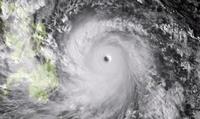
Exceptionally high losses from weather-related catastrophes in Europe and Supertyphoon Haiyan dominated the overall picture of natural catastrophes in 2013. Floods and hailstorms caused double-digit billion-dollar losses in central Europe, and in the Philippines one of the strongest cyclones in history, Supertyphoon Haiyan, resulted in a human catastrophe with over 6,000 fatalities.
-
-
Abandoned mine offers clues about permanent CO2 sequestration
Power plants and other industries are responsible for more than 60 percent of global CO2 emissions, according to the International Energy Agency. Sequestering the CO2 in magnesite deposits would prevent the gas from entering the atmosphere and warming the planet. Stanford University researchers, studyingveins of pure magnesium carbonate, or magnesite — a chalky mineral made of carbon dioxide (CO2) and magnesium – in an abandoned mine in the Red Mountain, propose a novel technique for converting CO2 into solid magnesite, making CO2 sequestration feasible.
-
-
Narrow view of science deters 10-14 year old students from considering science careers
Careers in science rarely appeal to 10-14 year old students unless the student has a family connection to science, new research finds. Researchers, using more than 19,000 survey results and a series of longitudinal interviews at three intervals over five years with students and parents, conclude that students are turned off pursuing science by a narrow view of where studying science leads and lofty conceptions of who is capable of it.
-
-
Relying on geoengineering to reduce climate change unlikely to succeed
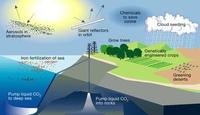
Reducing the amount of sunlight reaching the planet’s surface by geoengineering may not undo climate change after all. Researchers used a simple energy balance analysis to explain how the Earth’s water cycle responds differently to heating by sunlight than it does to warming due to a stronger atmospheric greenhouse effect. Further, they show that this difference implies that reflecting sunlight to reduce temperatures may have unwanted effects on the Earth’s rainfall patterns.
-
-
Urgent action needed to save the Great Plains water supply
Significant portions of the Ogallala Aquifer, one of the largest bodies of water in the United States, are at risk of drying up if it continues to be drained at its current rate.The body of water, also known as the High Plains Aquifer, spans from Texas to South Dakota and drives much of the region’s economy. Scientists are proposing alternatives that will halt and hopefully reverse the unsustainable use of water drawdown in the aquifer.
-
-
Risk of earthquake/tsunami in Caribbean higher than previously thought
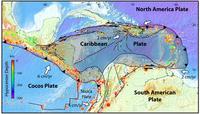
Enough strain may be currently stored in an earthquake zone near the island of Guadeloupe to cause a magnitude 8 or larger earthquake and subsequent tsunami in the Caribbean, according to a new U.S. Geological Survey study.
-
-
Carbon capture technology vital for meeting climate targets
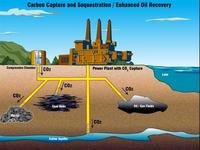
In 2010, coal, oil, and gas supplied more than 80 percent of the world’s total primary energy supply — and the demand for energy is projected to increase by two to three times by 2100. Studies show that without policies to cut greenhouse gas emissions, fossil fuels will remain the major energy source in 2100, with resulting increases in greenhouse gas emissions. Where should policymakers focus their carbon mitigation efforts, however? Which technologies hold the most promise?Scientists say that a combination of carbon capture and storage (CCS) and bioenergy has advantages over solar, wind, and nuclear because it can lead to negative emissions. Moreover, bioenergy can be converted into liquid and gaseous fuels which are easily storable and can be readily used by current transportation systems,thus taking some pressure off other sector in terms of required mitigation effort.
-
-
World's shrinking groundwater sources in urgent need of better governance
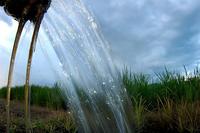
Groundwater makes up 97 per cent of the world’s available fresh water. Total global use is estimated by scientists at around 1,000 cubic kilometers a year, with the largest users being India, China, and the United States. Since 1900, the world has drawn down its groundwater reserves by an estimated 4,500 cubic kilometers — and demand continues to increase, especially in arid countries, which are rapidly running short of water that can be affordably extracted. Scientist has urged the world to take better care of its groundwater resources — or risk dangerous scarcities, economic impacts, and potential conflicts in coming decades.
-
-
Sun not a key cause of climate change

Climate change has not been strongly influenced by variations in heat from the sun, a new scientific study shows. The findings overturn a widely held scientific view that lengthy periods of warm and cold weather in the past might have been caused by periodic fluctuations in solar activity.
-
More headlines
The long view
How Climate Change Will Affect Conflict and U.S. Military Operations
“People talk about climate change as a threat multiplier,” said Karen Sudkamp, an associate director of the Infrastructure, Immigration, and Security Operations Program within the RAND Homeland Security Research Division. “But at what point do we need to start talking about the threat multiplier actually becoming a significant threat all its own?”
